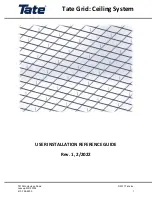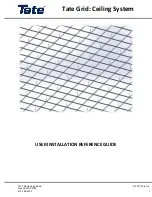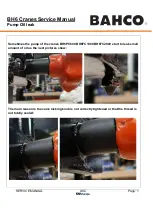
The detect word on which the error detector attempts to resync is
chosen strictly by chance. So if there are two instances of the detect
word in the pattern, the error detector has a 50% chance of selecting the
correct one.
The more instances of the detect word exist in the pattern, the higher
are the chances for incorrect synchronization. The software attempts in
any case to identify a 48-bit pattern that occurs as seldom as possible
in the pattern. For very large patterns, this can unfortunately take a
very long time, and the software ends the search if it expects that it
would take longer to find an adequate detect word than it would to
attempt to synchronize. If the search for a detect word is ended, the
most unique detect word identified is used.
Patterns must always be synchronized in order to do accurate BER
testing. If patterns are out of alignment by just one bit, errors can be as
high as 50% (5E-1) for PRBS patterns, and 100% (1E+0) for custom
patterns.
By default, the error detector is in automatic sync mode with a sync
threshold of 1E-3. This setting is recommended for most applications,
and usually allows the synchronization function to be "transparent",
requiring no attention. However, for special applications, changes can
be made to the sync mode and sync threshold.
What Type of Synchronization Should You Use?
The type of synchronization you use affects how errors are measured
and displayed. A
Sync Loss
is recognized when the BER is greater than
the sync threshold. This can be caused by a high error rate, pattern
misalignment, or clock loss. Choose the sync mode setting that is
appropriate for the type of errors you anticipate.
•
Automatic Sync with a sync threshold BER of 1E-3 is recommended
for most applications.
With this mode selected, the synchronization algorithm starts
whenever the BER exceeds the threshold. However, it is not possible
to make accurate BER measurements higher than the sync threshold.
•
Manual sync can be used for synchronizing once, confirming proper
pattern alignment, and then measuring BERs higher than the sync
threshold. This is useful for the following applications:
– To monitor the integrity of clock signals. You may wish to
measure BERs that exceed the sync threshold to confirm clock
slip.
– To collect data for constructing eye contour information. You may
wish to move the sampling point to locations in the data eye that
have BERs exceeding the sync threshold.
Setting up the Error Detector
4
Agilent J-BERT N4903 High-Performance Serial BERT
141
Further Considerations
Содержание J-BERT N4903
Страница 1: ...S Agilent J BERT N4903 High Performance Serial BERT User Guide s Agilent Technologies...
Страница 68: ...2 Setting up Patterns 68 Agilent J BERT N4903 High Performance Serial BERT...
Страница 158: ...4 Setting up the Error Detector 158 Agilent J BERT N4903 High Performance Serial BERT...
Страница 314: ...6 Evaluating Results 314 Agilent J BERT N4903 High Performance Serial BERT...
Страница 374: ...7 Jitter Tolerance Tests 374 Agilent J BERT N4903 High Performance Serial BERT...
Страница 394: ...8 Solving Problems 394 Agilent J BERT N4903 High Performance Serial BERT...
Страница 434: ...Index 434 Agilent J BERT N4903 High Performance Serial BERT...
















































